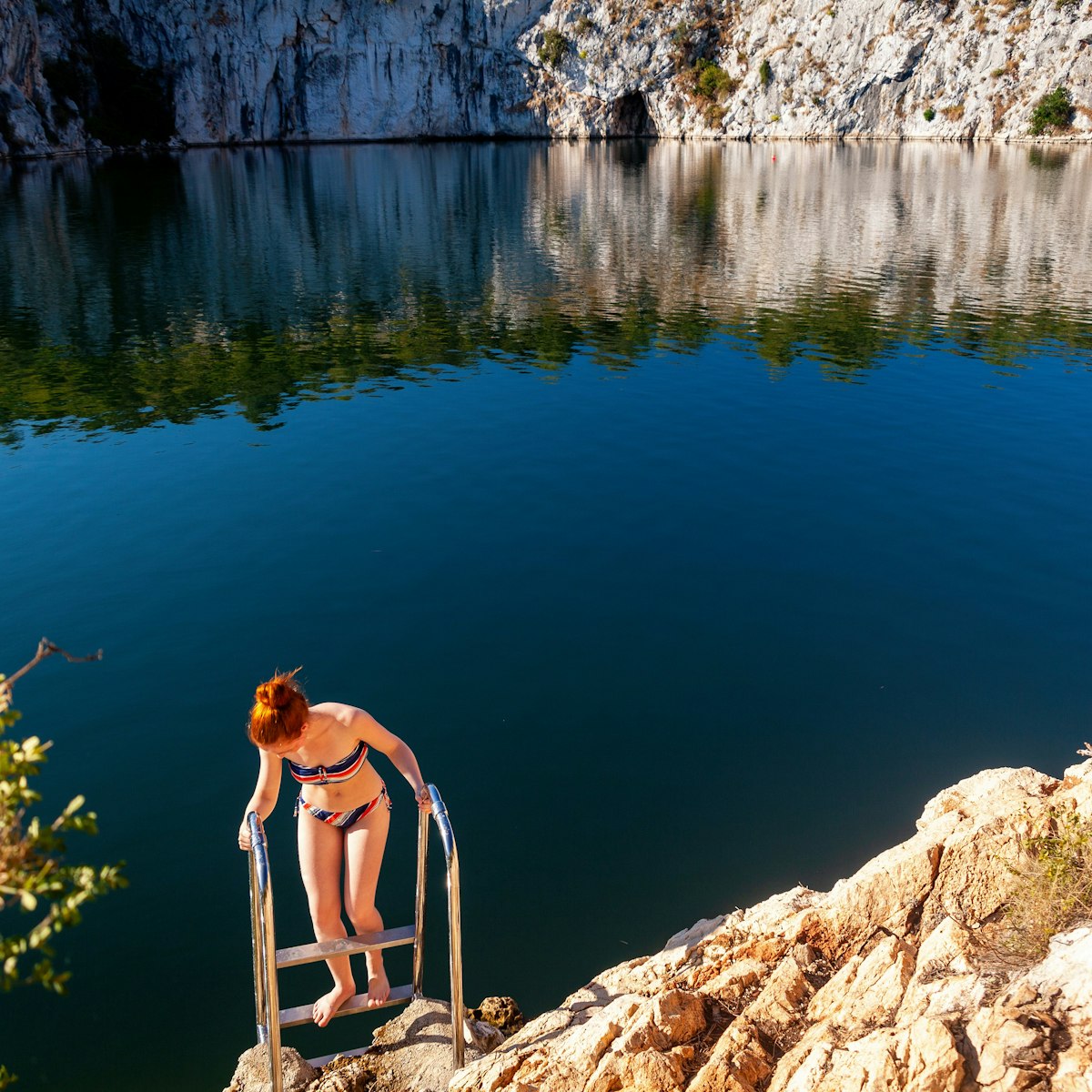Taking up a prime harborside position, the extraordinary complex of Diocletian's Palace is one of the most imposing ancient Roman structures in existence today, and it's where you’ll spend most of your time while in Split. Don’t expect a palace, though, nor a museum – this is the city's living heart, its labyrinthine streets packed with people, bars, shops and restaurants.
Although it's easy to lose sight of the palace amid the bustle of Split's waterfront promenade, take time to step back and look up. The original arches and columns of the palace wall can be easily discerned above the shops and restaurants. It would have presented a magnificent face to the sea, with the water lapping at the base of the walls. It's not hard to see why Diocletian built his imperial apartments on this south-facing side of the palace, gazing directly out over the water.
History of the palace walls and gates
Built as a combined imperial residence, military fortress and fortified town, the palace's original structure has been added to continuously over the millennia, the alterations increasing the allure of this fascinating site.
Diocletian – the first Roman emperor to abdicate voluntarily – commissioned this magnificent palace to be completed in time for his retirement in AD 305. It was built from lustrous white stone transported from the island of Brač, and construction lasted 10 years. Diocletian spared no expense, importing marble from Italy and Greece, and columns and 12 sphinxes from Egypt.
Each wall has a gate at its center that's named after a metal: the elaborate northern Golden Gate, the southern Bronze Gate, the eastern Silver Gate and the western Iron Gate. The unassuming Bronze Gate once opened straight from the water into the palace basements, enabling goods to be unloaded directly from ships and stored here. Now this former tradesman's entrance is the main way into the palace from the Riva. Between the eastern and western gates there’s a straight road (Krešimirova, also known as Decumanus), which separated the imperial residence on the southern side, with its state rooms and temples, from the northern side, once used by soldiers and servants.
Substructure
While the central part of the palace's substructure is now a major thoroughfare lined with souvenir stalls, entry to the chambers on either side is ticketed. Although mostly empty save the odd sarcophagus or bit of column, the basement rooms and corridors exude a haunting timelessness that is worth the price of admission. For fans of Game of Thrones, here be dragons – Daenerys Targaryen keeps her scaly brood here when she's in Meereen.
Cathedral of St Domnius and the Temple of Jupiter
Split’s octagonal Cathedral of St Domnius is one of the best-preserved ancient Roman buildings still standing today. It was built as a mausoleum for Diocletian, who was interred here in AD 311. The exterior of the building is still encircled by an original colonnade of 24 columns. A much later addition, the tall Romanesque bell tower, was constructed between the 13th and 16th centuries and reconstructed in 1908 after it collapsed.
Although it's now the cathedral's baptistery, the Temple of Jupiter was originally an ancient Roman temple dedicated to the king of the gods. It still has its original barrel-vaulted ceiling and decorative frieze, although a striking bronze statue of St John the Baptist by Ivan Meštrović now fills the spot where Jupiter once stood. The font is made from 13th-century carved stones recycled from the cathedral's rood screen.
Tickets for the cathedral include admission to the crypt, treasury and baptistery (Temple of Jupiter). Tickets are sold separately for those eager to climb the bell tower. You'll need a head for heights, though, as the steep stone stairs quickly give way to flimsy metal ones suspended over the internal void.
Present day life within the palace walls
There are 220 buildings within the palace boundaries, home to about 3000 people. The narrow streets hide passageways and courtyards – some deserted and eerie, others thumping with music from bars and cafes – while residents hang out their washing overhead, kids kick footballs against the ancient walls, and people sit in their windows watching the action below.











